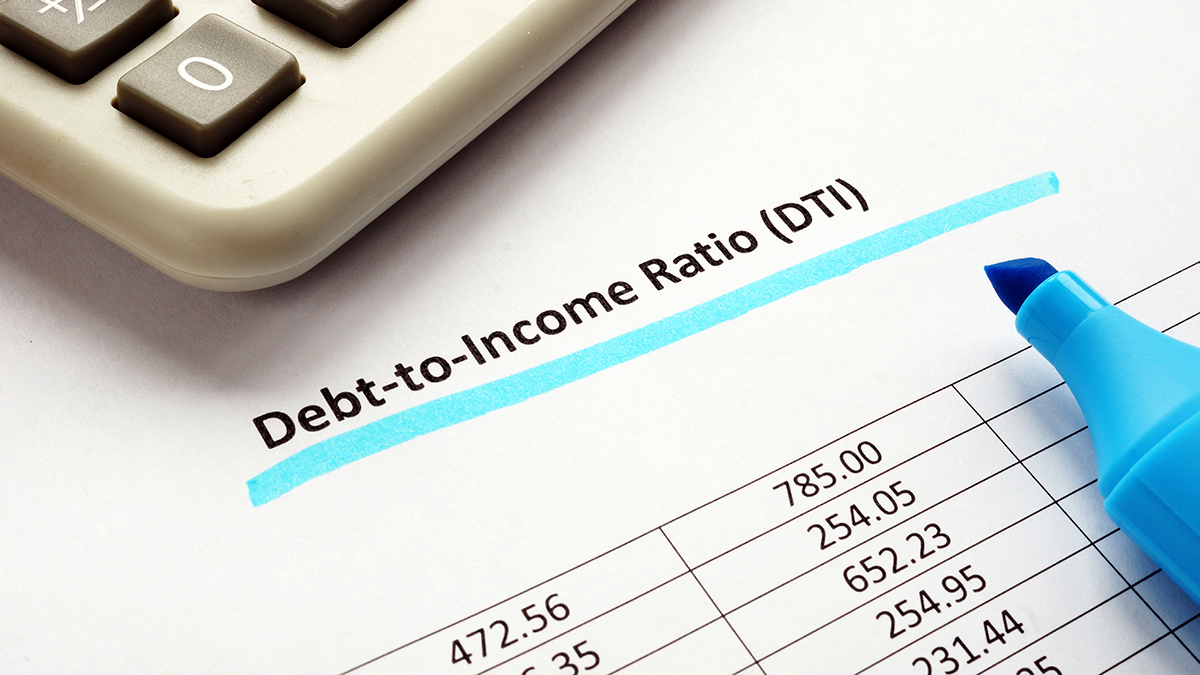If you've ever applied for a loan, your lender may have mentioned something called the Debt-to-Income (DTI) ratio. It may sound a little complex, but the debt-to-income ratio (DTI ratio) isn't difficult to understand. Knowing how it's calculated and used in the loan application process can also be helpful in determining your chances of qualifying.
What Is the Debt-to-Income Ratio?
When considering someone for a loan, lenders use the DTI, which is a simple ratio that compares how much you earn each month to how much debt you currently have. Lenders may review your DTI ratio for any type of loan that you apply for, like a mortgage, home construction loan, personal loan, small business loan or something else
Examples of debt that factor into your DTI include:
- Vehicle payments
- Student loan payments
- Credit card debt
- Mortgage or rent payments
- Alimony or child support payments
- Other debt
It's important to note that your living expenses—such as groceries, gas, utilities, entertainment, healthcare and others—are not included.
The DTI ratio is always expressed as a percentage. If your DTI ratio is 30%, for example, that means that 30% of your monthly gross income is used to pay your monthly debt.

How Is the Debt-to-Income Ratio Determined?
Calculating your DTI ratio can be completed in three simple steps. By calculating your DTI ratio before talking to a loan officer, you can be aware of your ratio and if there are some things you can do to improve it.
1. Add Up Your Current Debt
Make a list of your monthly debt payments and then add them up.
2. Divide Your Total Debt by Your Monthly Gross Income
Take the amount you came up with in Step 1 and divide it by your monthly gross income, which is how much you earn before taxes.
3. Convert the Result into a Percentage
Convert the number you obtained in Step 2 into a percentage by multiplying it by 100.
A Practical Example
Let's consider a hypothetical situation where someone is interested in applying for a mortgage. The borrower earns a monthly gross income of $6,000 and has the following monthly debt payments:
Car payment: $550
Rent payment: $1,200
Student loan payment: $400
1. $550 + $1,200 + $400 = $2,150
2. $2,150 / $6,000 = 0.358333…
3. : 0.358333… X 100 = 35.8333…
Thus, their DTI Ratio = 35.83%

What Is a Good Debt-to-Income Ratio?
When lenders consider someone's DTI ratio, the lower the percentage, the better. As previously mentioned, the DTI ratio reflects the percentage of monthly gross income that is used to pay your monthly debt. A lower ratio, therefore, indicates that you will have less trouble paying your monthly debt than if your ratio was higher.
Lenders prefer DTI ratios that are lower than 36%, and the highest DTI ratio that most lenders will consider is 43%. This is not a hard rule, however, and it is possible to obtain a loan in some cases with a higher DTI ratio. Loan determinations are based on several factors including an applicant's credit score, income, work history, and others.
How Can You Improve Your Debt-to-Income Ratio?
If you calculate your DTI ratio and discover that it is high, you can decrease it by paying off some of your existing debt. About 55% of Americans have credit card debt, and for most this is the easiest debt to repay.
Learn More About Personal Finance Topics
For more answers about Debt-to-Income Ratios, and other personal finance topics that matter to you, visit the Learning Center on TD Bank's website.
We hope you found this helpful. Our content is not intended to provide legal, investment or financial advice or to indicate that a particular TD Bank product or service is available or right for you. For specific advice about your unique circumstances, consider talking with a qualified professional.
